I hadn't been to Texas ever on vacation—and the few times I'd gone on business trips (to Fort Worth, Houston, and Austin), I hadn't had a lot of time to go touring anywhere.
So I wanted to take advantage of my eclipse trip to see a few of the sights of North Texas, for I may not pass that way again.
We were staying in Whitney, about an hour and a half southwest of Dallas—which turned out to be kind of a difficult spot to call a taxi or shuttle to the airport. But fortunately, the nearby town of Hillsboro had a rideshare driver willing to make the trek—which meant I had just enough time to squeeze in the town's Roadside America Museum before heading back home.
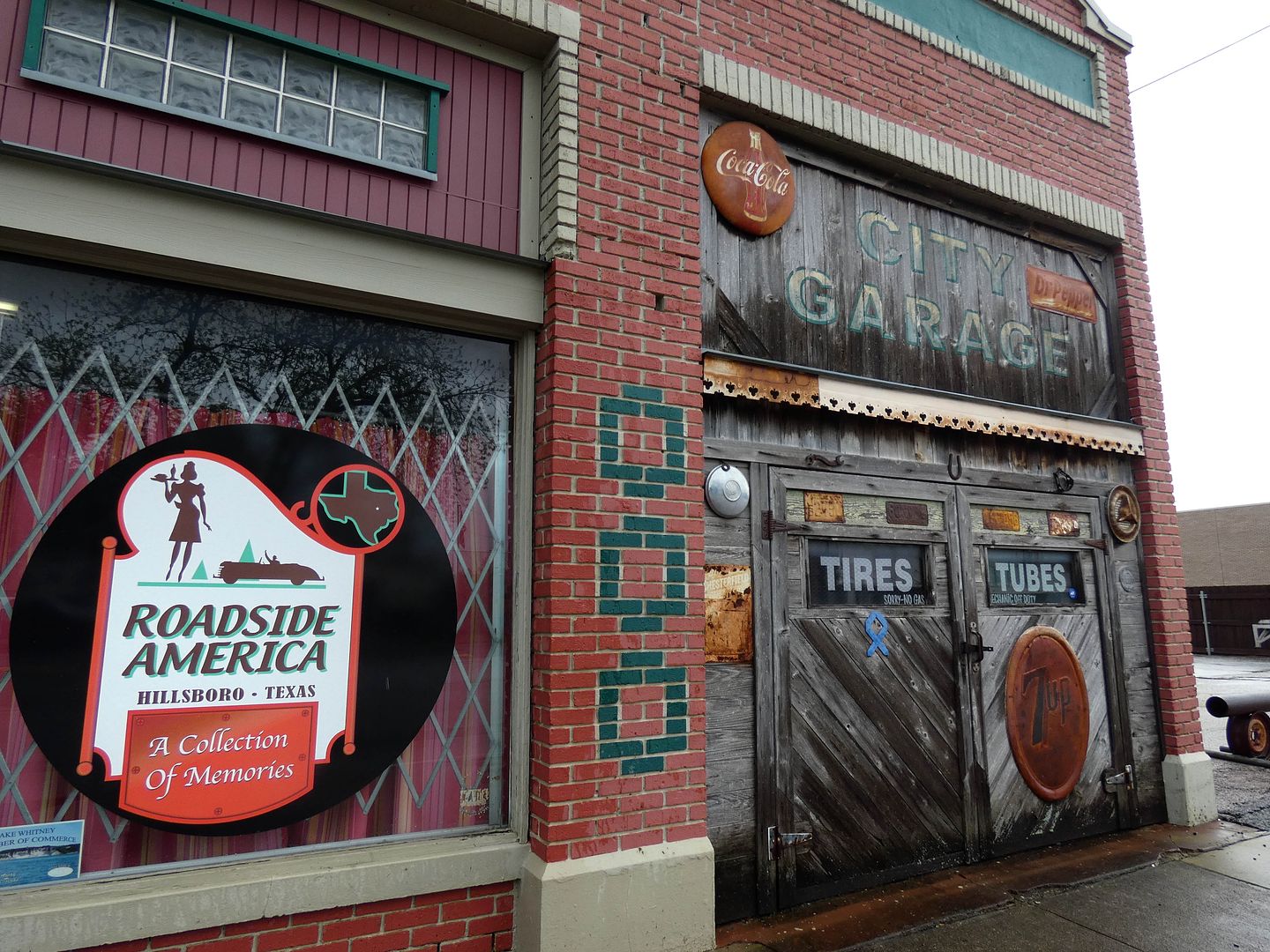
It's located in a 100-year-old former Ford dealership building, where its owner Carroll Estes (no relation to the Estes Dairy Farm) will open the doors for you and give you a tour if you ring him up on the cell phone number posted out front.
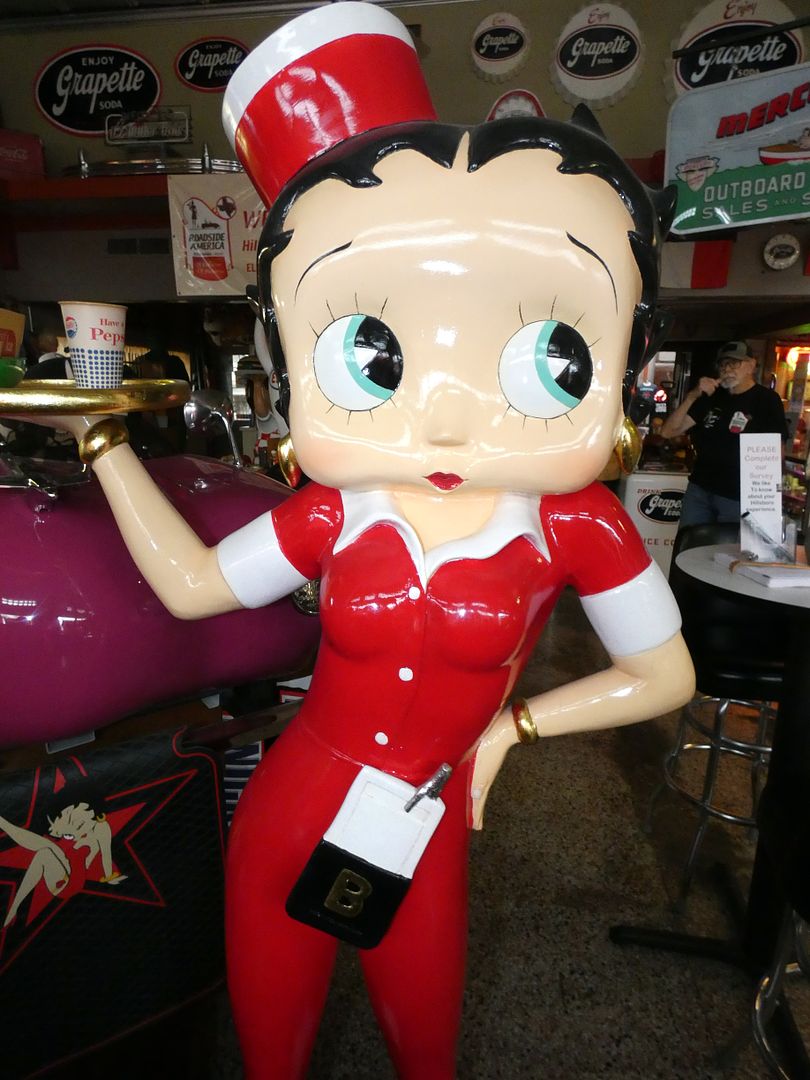
The first thing to greet you as you walk in—if you can focus on any one thing—is the 50s diner waitress version of Betty Boop, a staple of any retro memorabilia collection.

But don't let her give you the wrong impression—because there are lots of other mid-20th century artifacts, ephemera, advertising mascots, and more that you've probably never seen in any other museum.

Its collection of Americana ranges from petroliana (oil cans, gas cans, road signs, and travel-related stuff)...
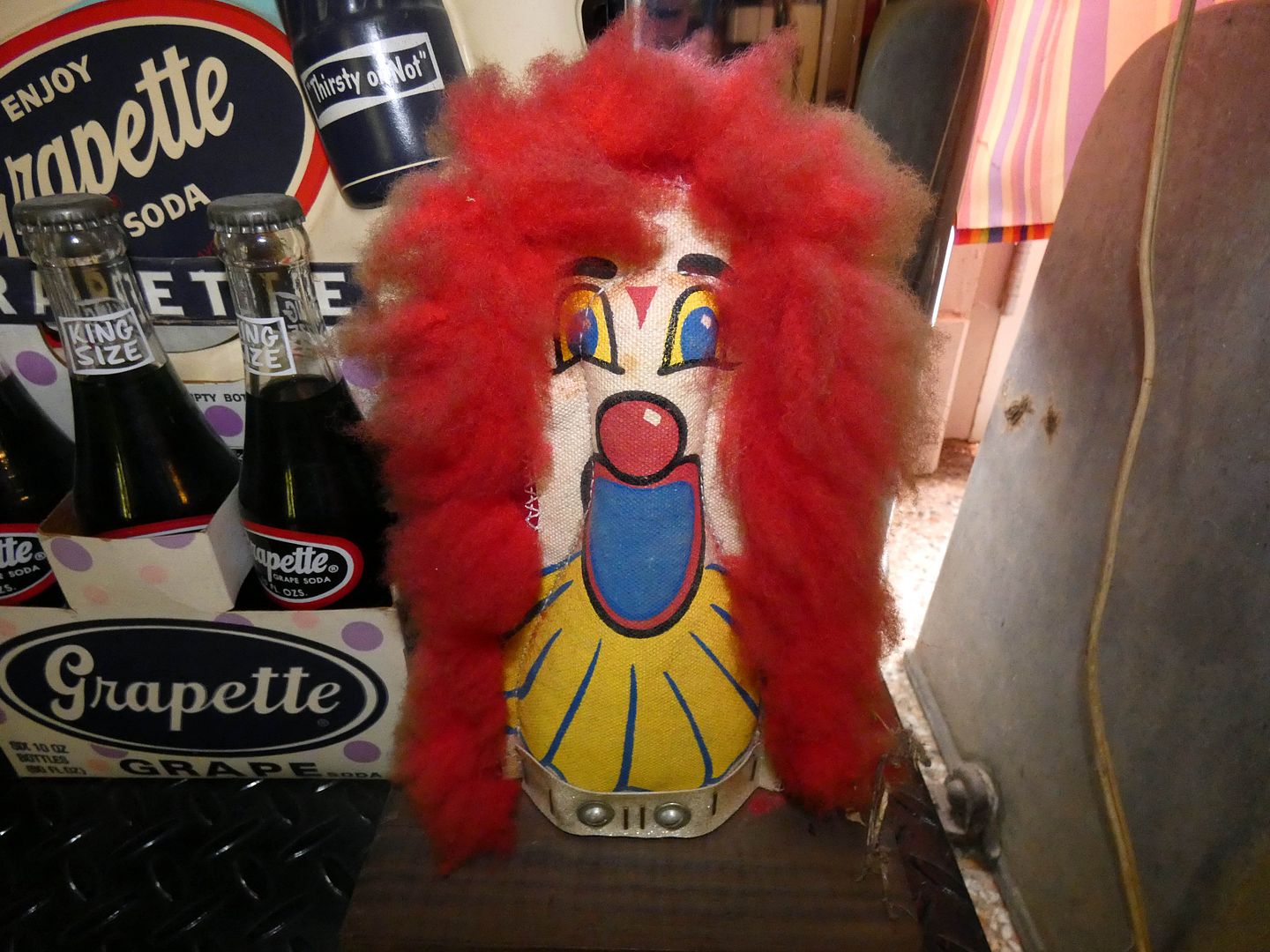
...to carnivalia (like those creepy knockdown dolls)...
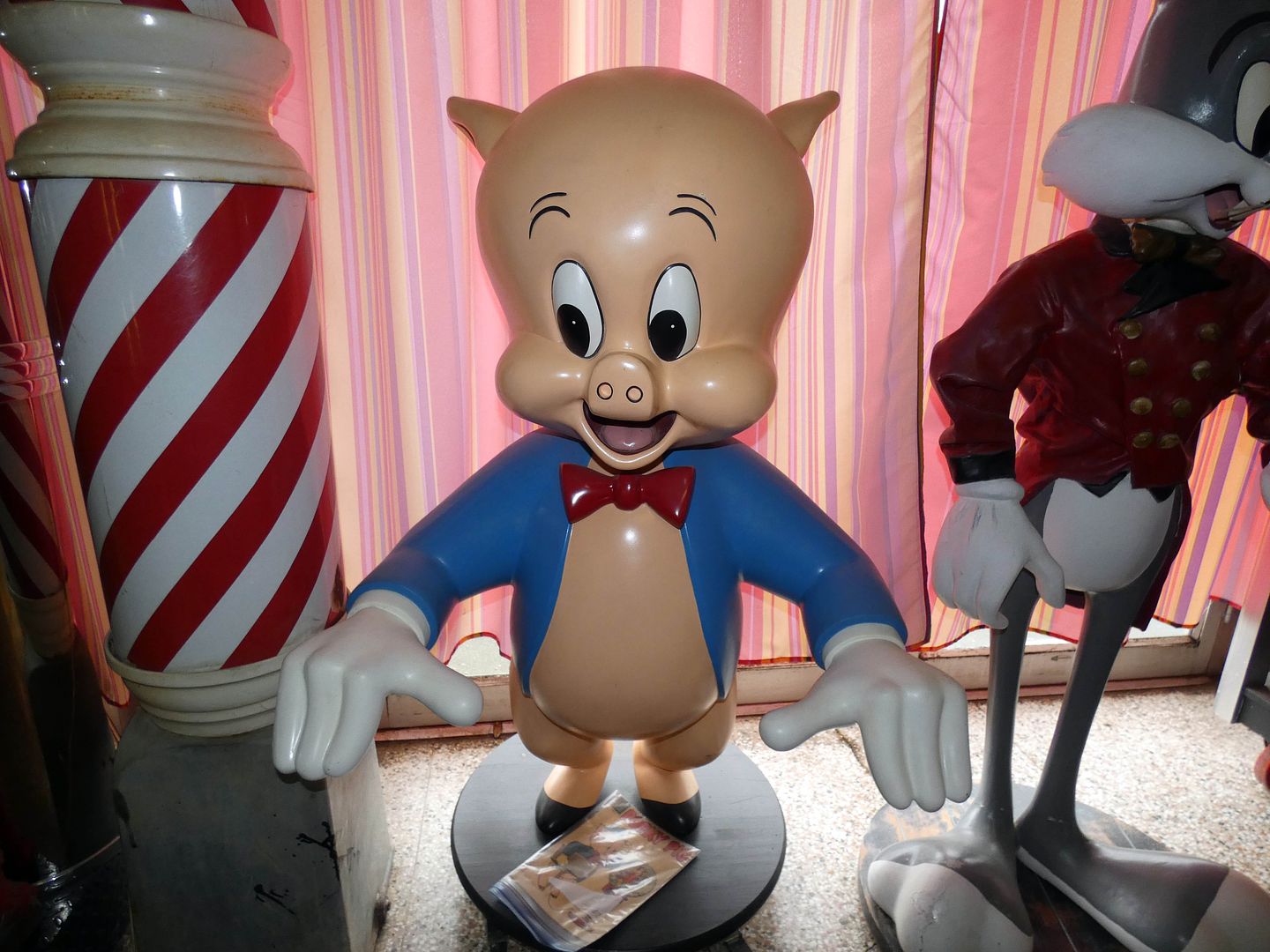
...to Looney Tunes-iana, including the Tasmanian Devil, Roadrunner, Porky Pig...

...and Yosemite Sam.

Of course, fast food icons were represented well, like a giant hot dog statue...
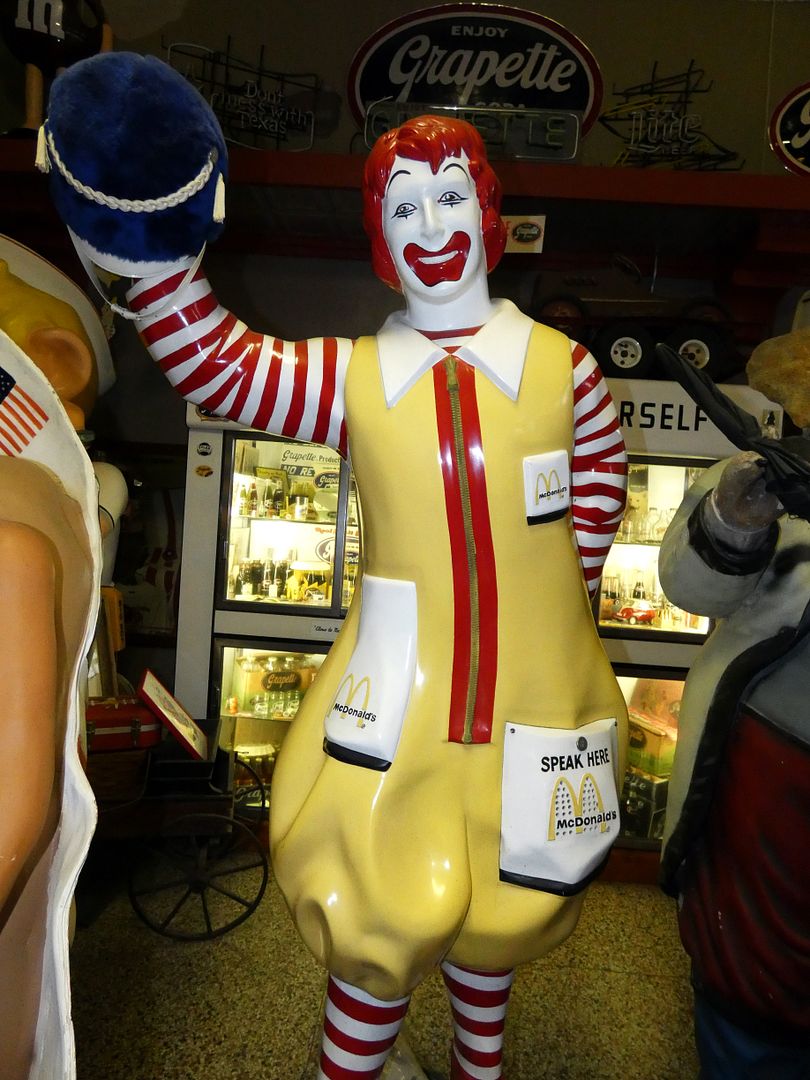
...a super-sized Ronald McDonald statue that you could order into at the drive-thru (possibly circa early 1970s)...
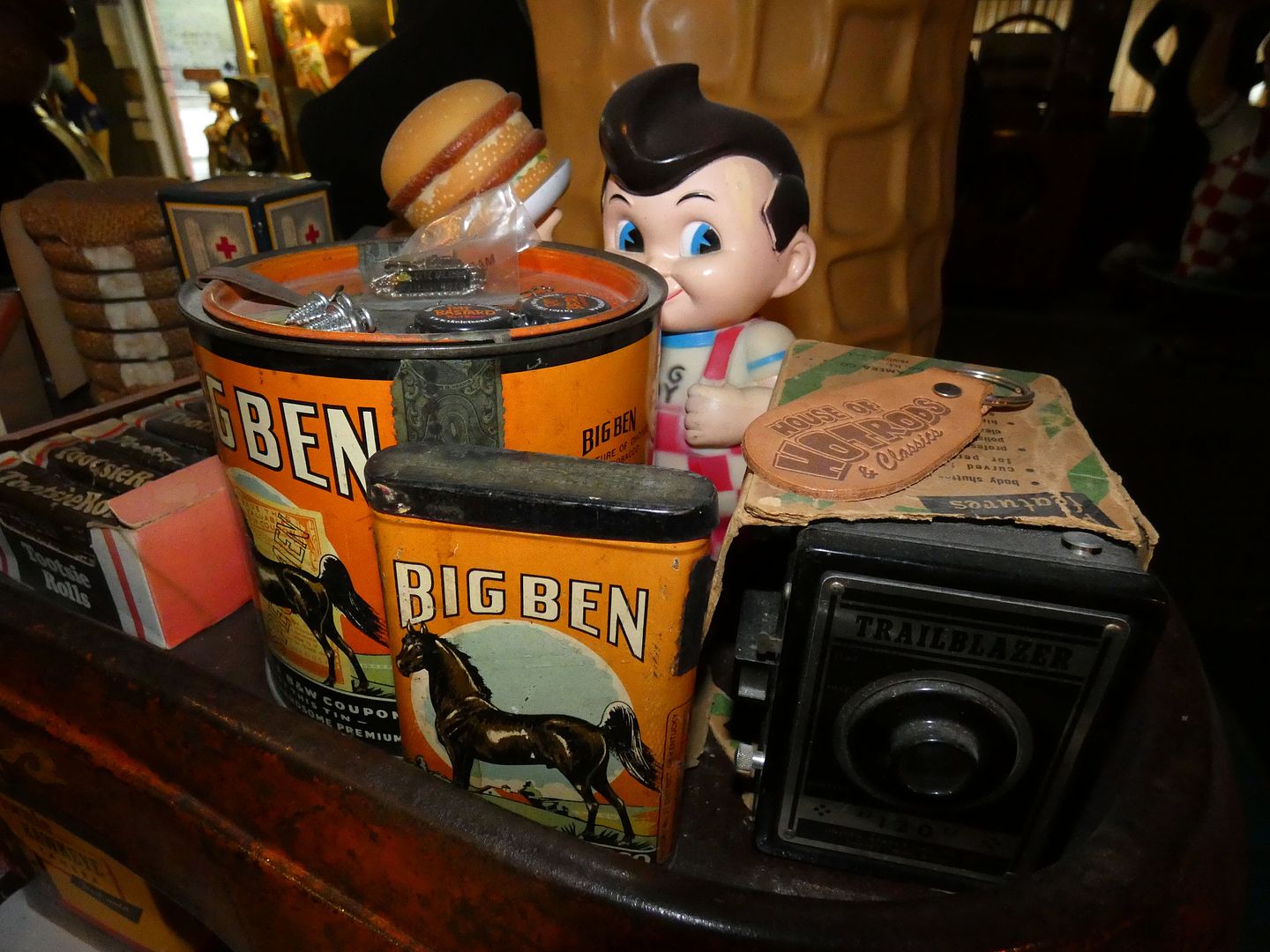
...and, of course, my best friend in fiberglass, Big Boy.
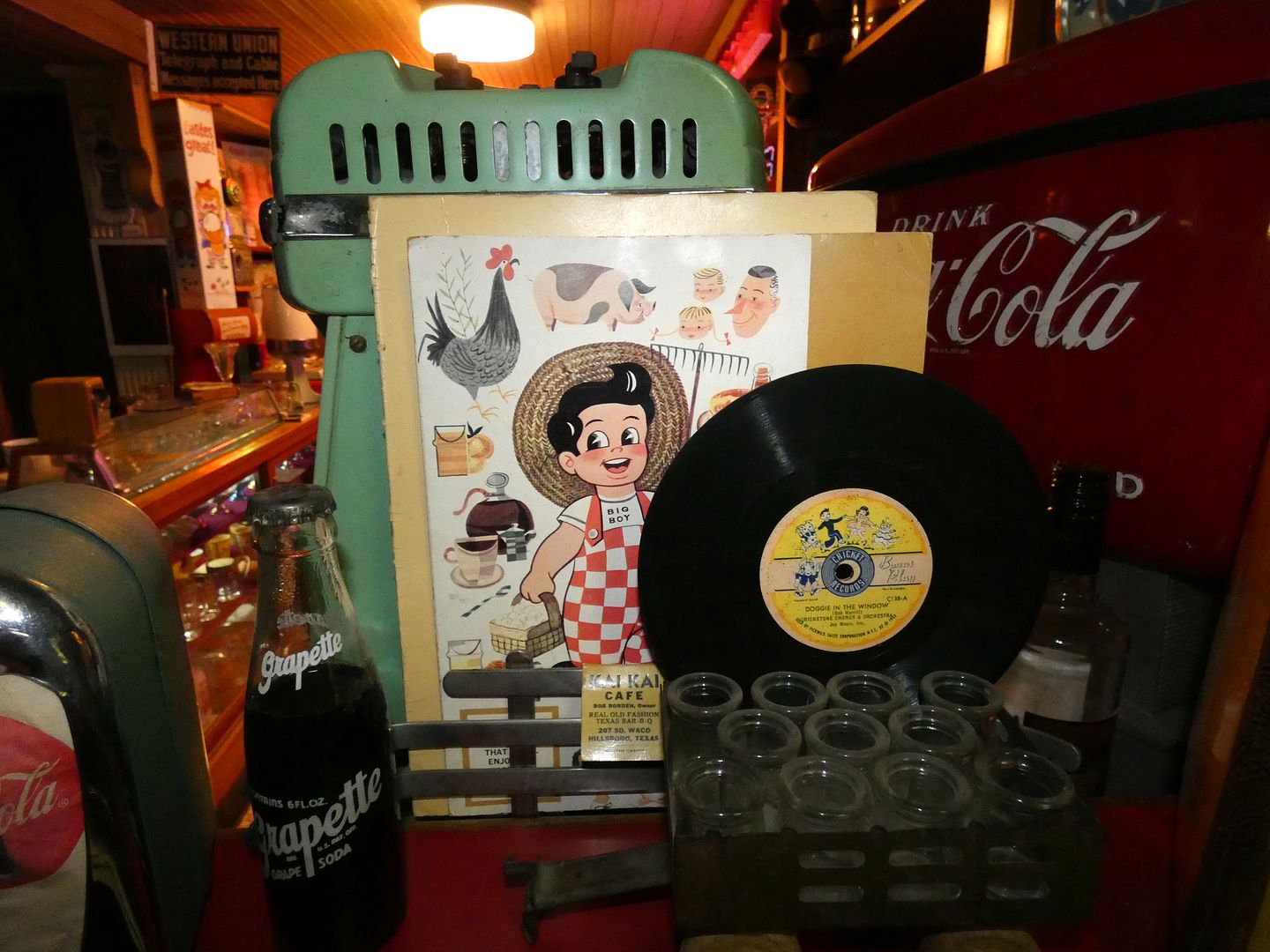
He actually was the main draw for me to visit the Roadside America Museum...
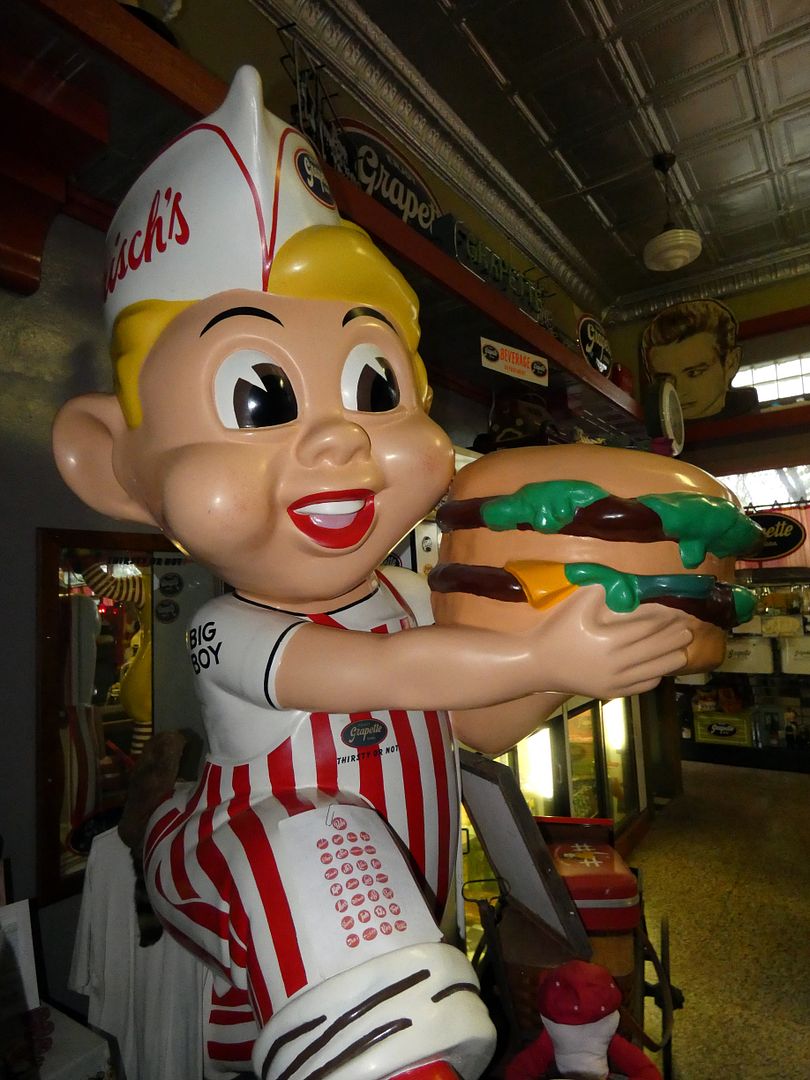
...and while I prefer the "Bob's" (or TJ's) version of Big Boy, I was thrilled to see a Frisch's version (which is totally different) in the flesh.
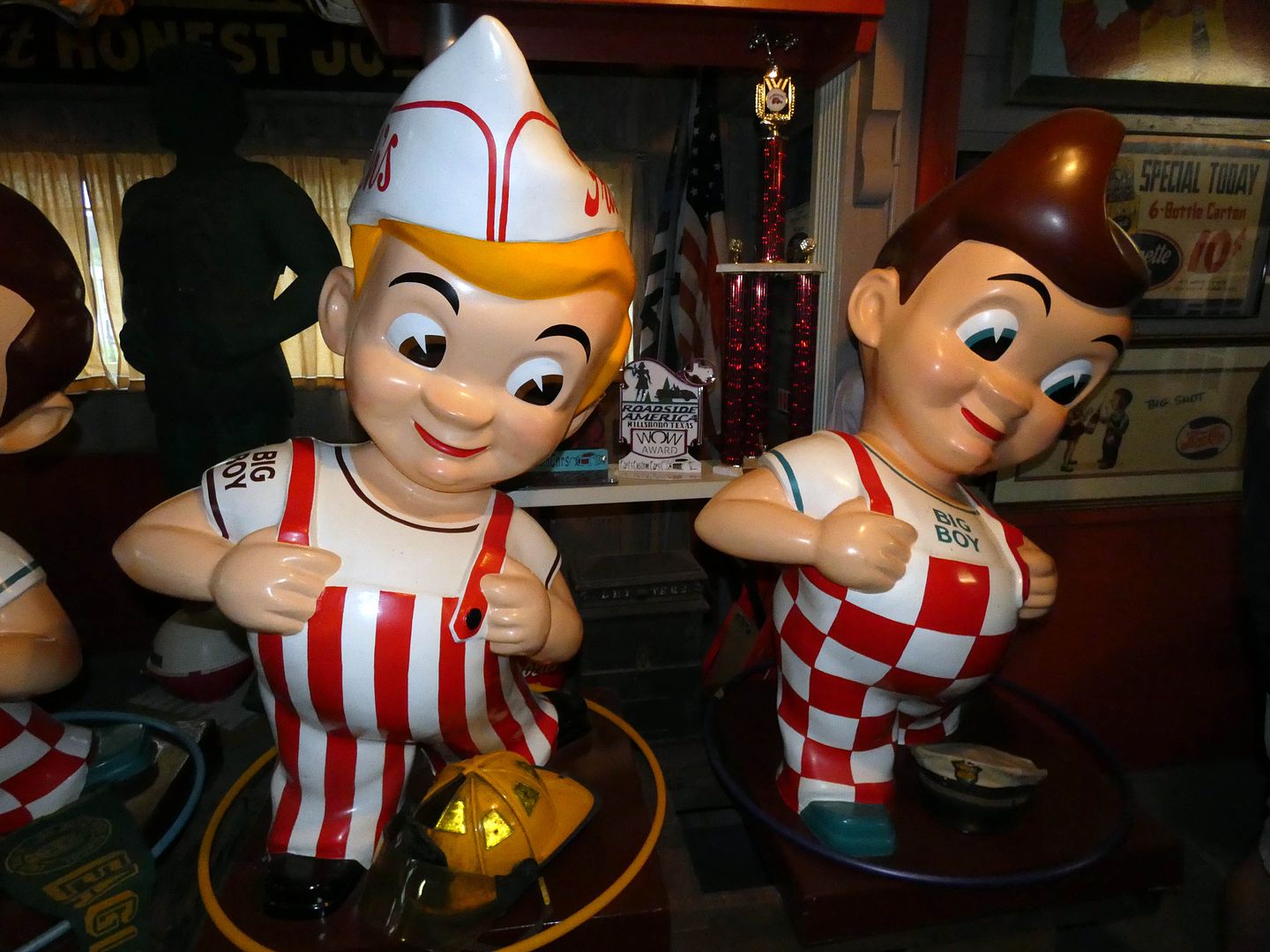


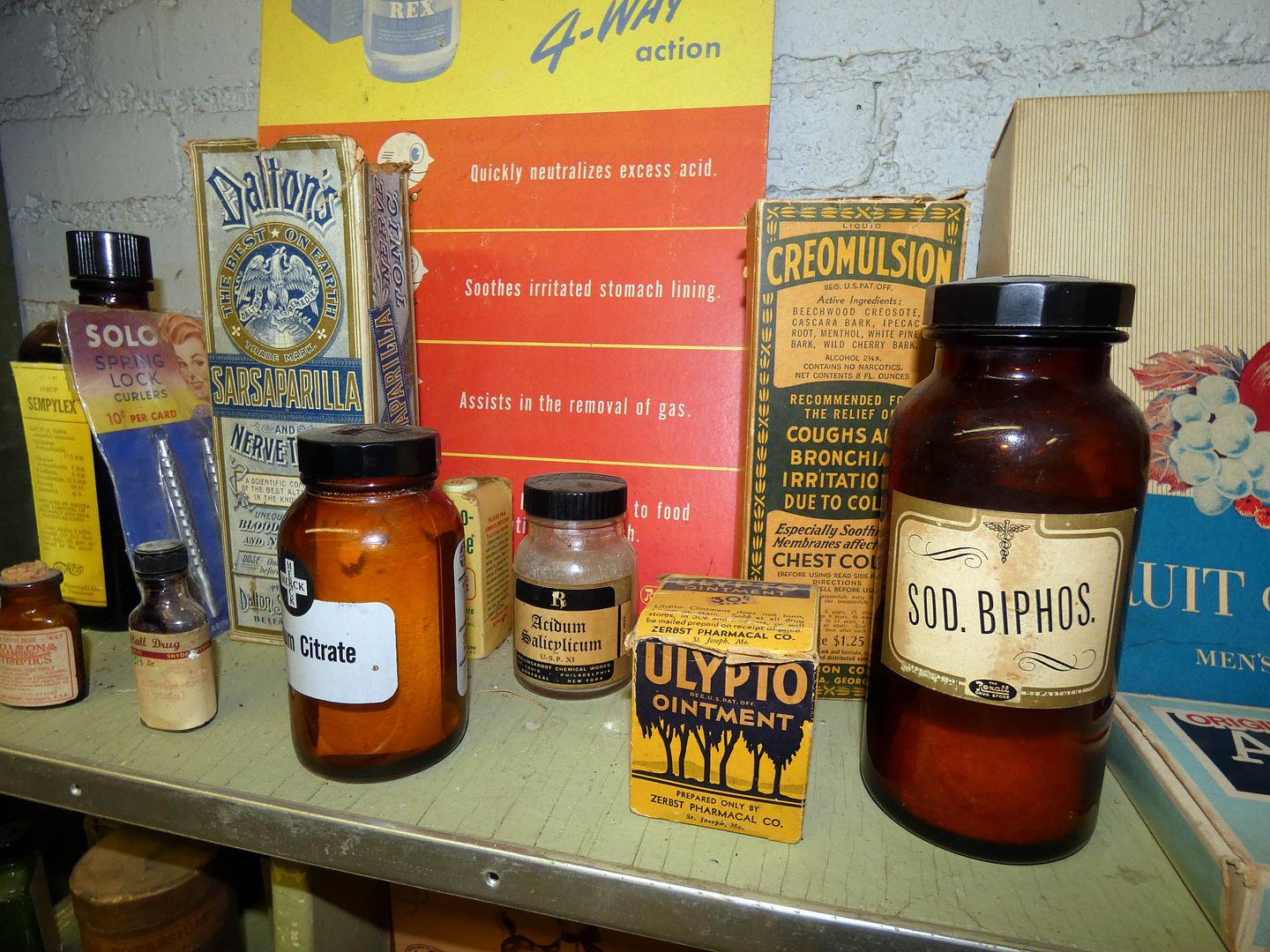



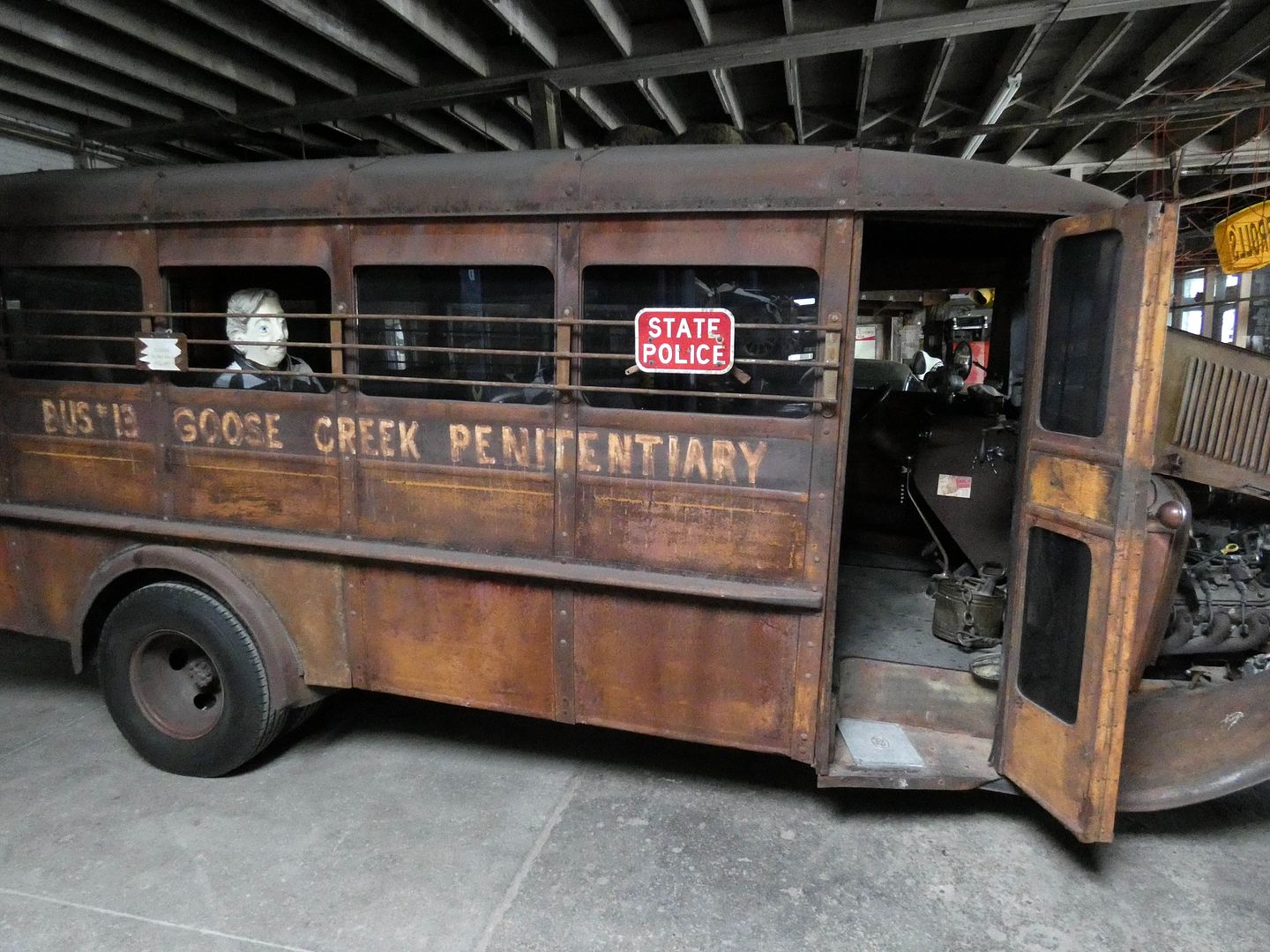
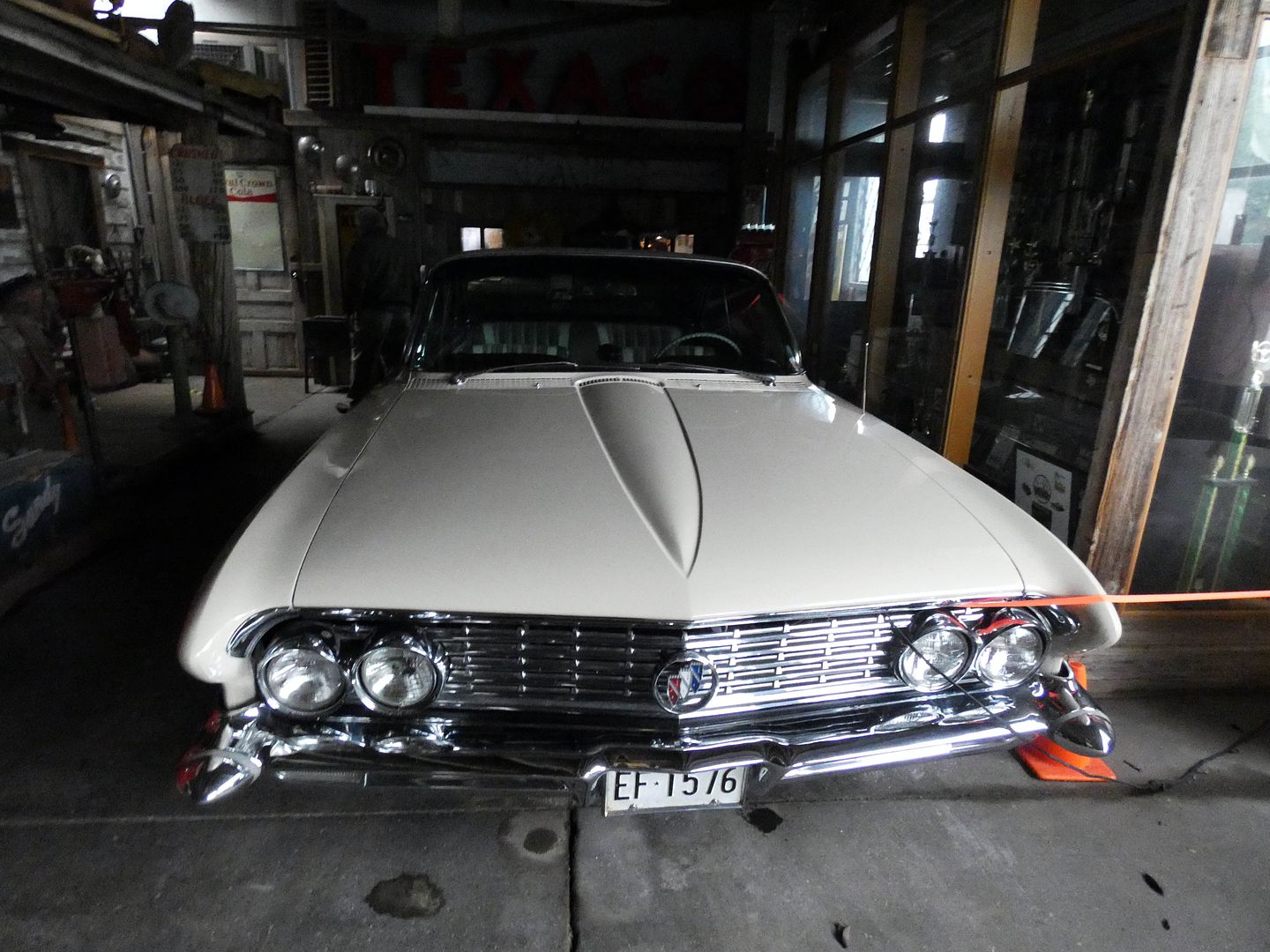

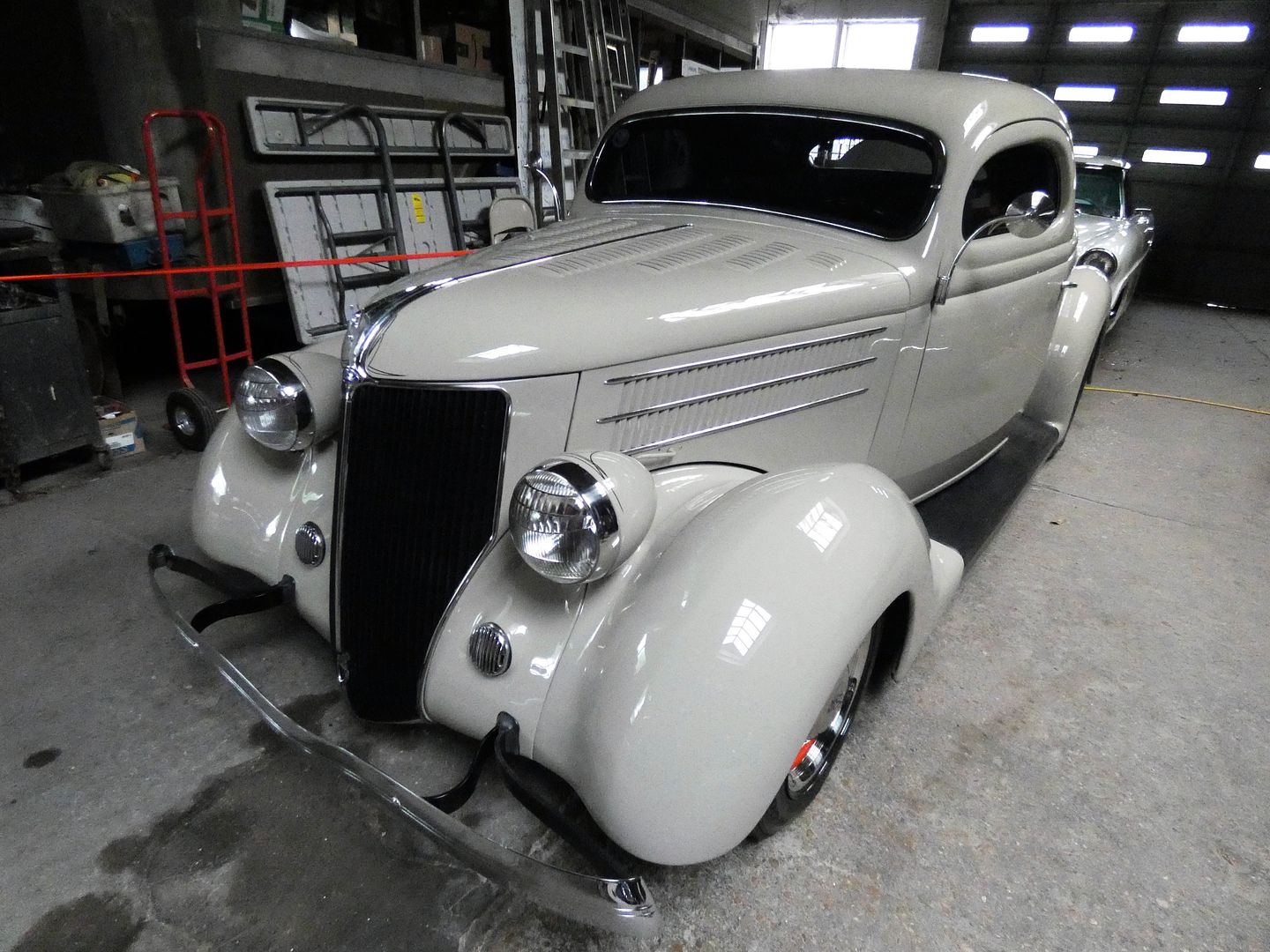
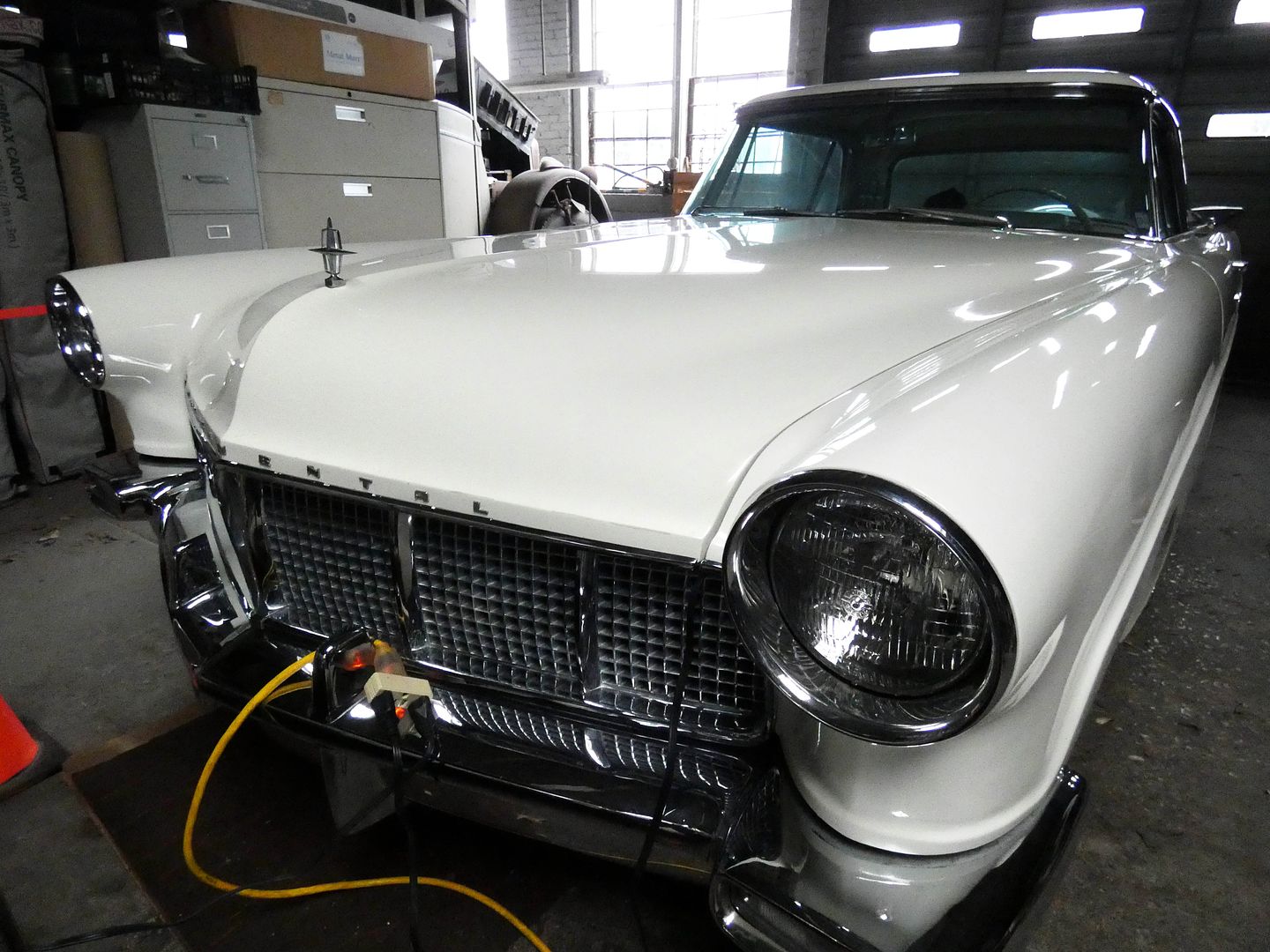
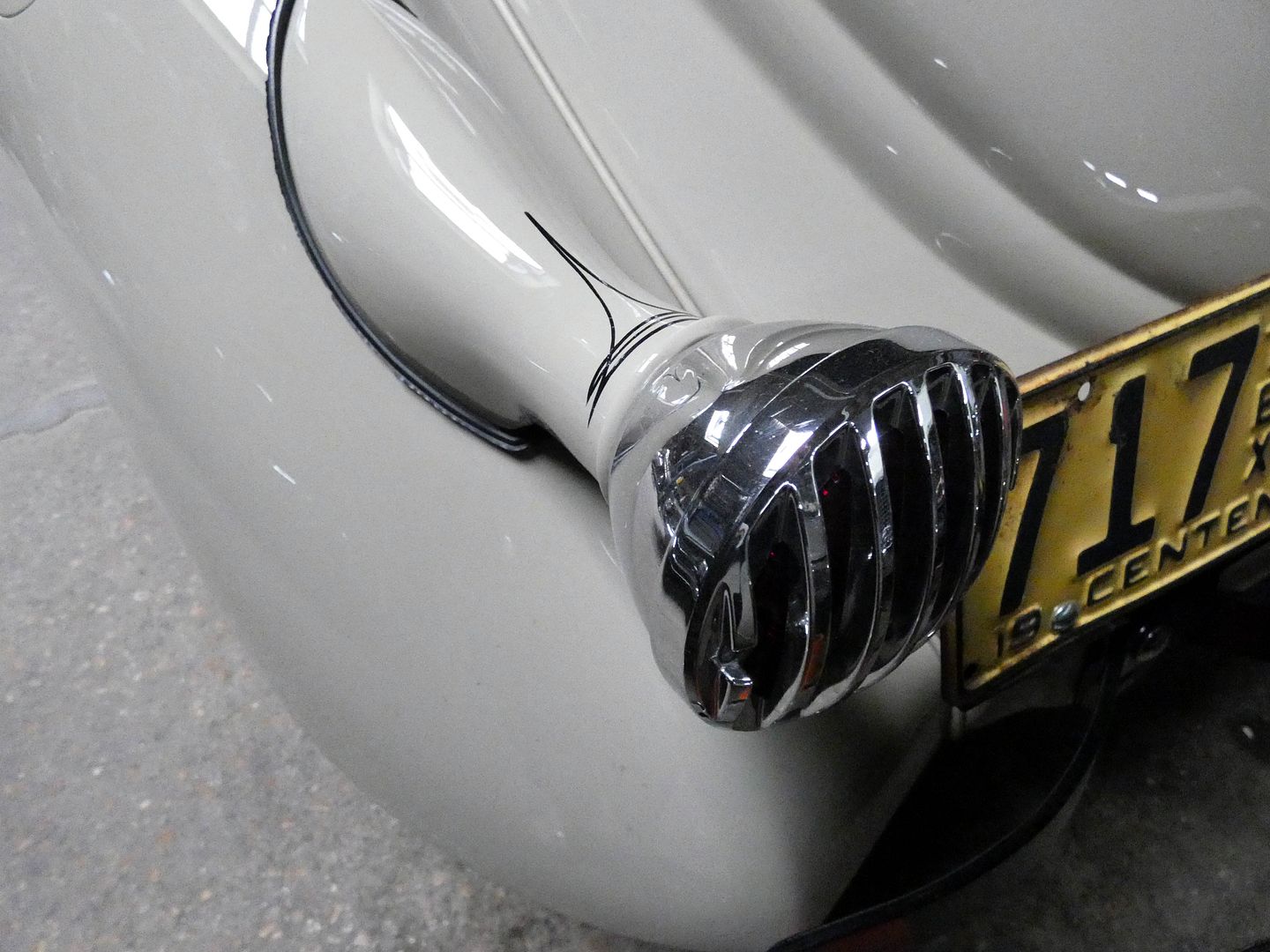

The museum even had a couple of shorter/smaller-sized ones (though still large), usually placed in restaurant lobbies (as opposed to the roadside ones meant to attract the attention of travelers driving by).

Of course, they were surrounded by other restaurant and advertising mascots, like the Jolly Green Giant, Michelin Man, Pillsbury Dough Boy, and Mr. Peanut.

In the replica soda shop (which Estes assembled piece-by-piece), you'll find plenty of bottles of Dr. Pepper (which was invented not far from Hillsboro, in Waco, Texas) and Nehi soda (a favorite of Corporal "Radar" O'Reilly on M*A*S*H).

Once upon a time, it was common to see soda served in pharmacies and among healthy tonics and potions...

...although Estes has also added some pretty toxic items to his collection as well.

Perhaps the most morbid attraction of the Roadside America Museum is the original metal casket of the Big Bopper (a victim of a 1959 plane crash, along with Buddy Holly and Richie Valens). In 2007, his body was exhumed and examined to determine cause of death and dispel rumors of a gunshot wound; and when he was reinterred, it was in a new casket made by the same manufacturer as the original.

In the automobile room, there's something that looks like either a salvaged diner or a junked bus (or maybe a repurposed rail car), perhaps from the Blue Bonnet Court (maybe the one in Austin?)...

...and a rusted-out 1932 Ford bus once used for transporting inmates to (or from?) Goose Creek Penitentiary, perhaps the one in Alaska, now used for hot rod car shows and parades (like the Veterans' Day Parade in Waco, Texas) and things.

Estes is a self-proclaimed hoarder—but he considers himself more of a preservationist than a collector.

And every car (and bus) in his collection... including a Chevy from the U.S. Forest Service... is driven, not towed.

Many of them are recent acquisitions, in pristine condition...

...including his 1955 Lincoln Continental, with original interior...

...spare tire trunklid, and unusual tail lights. 
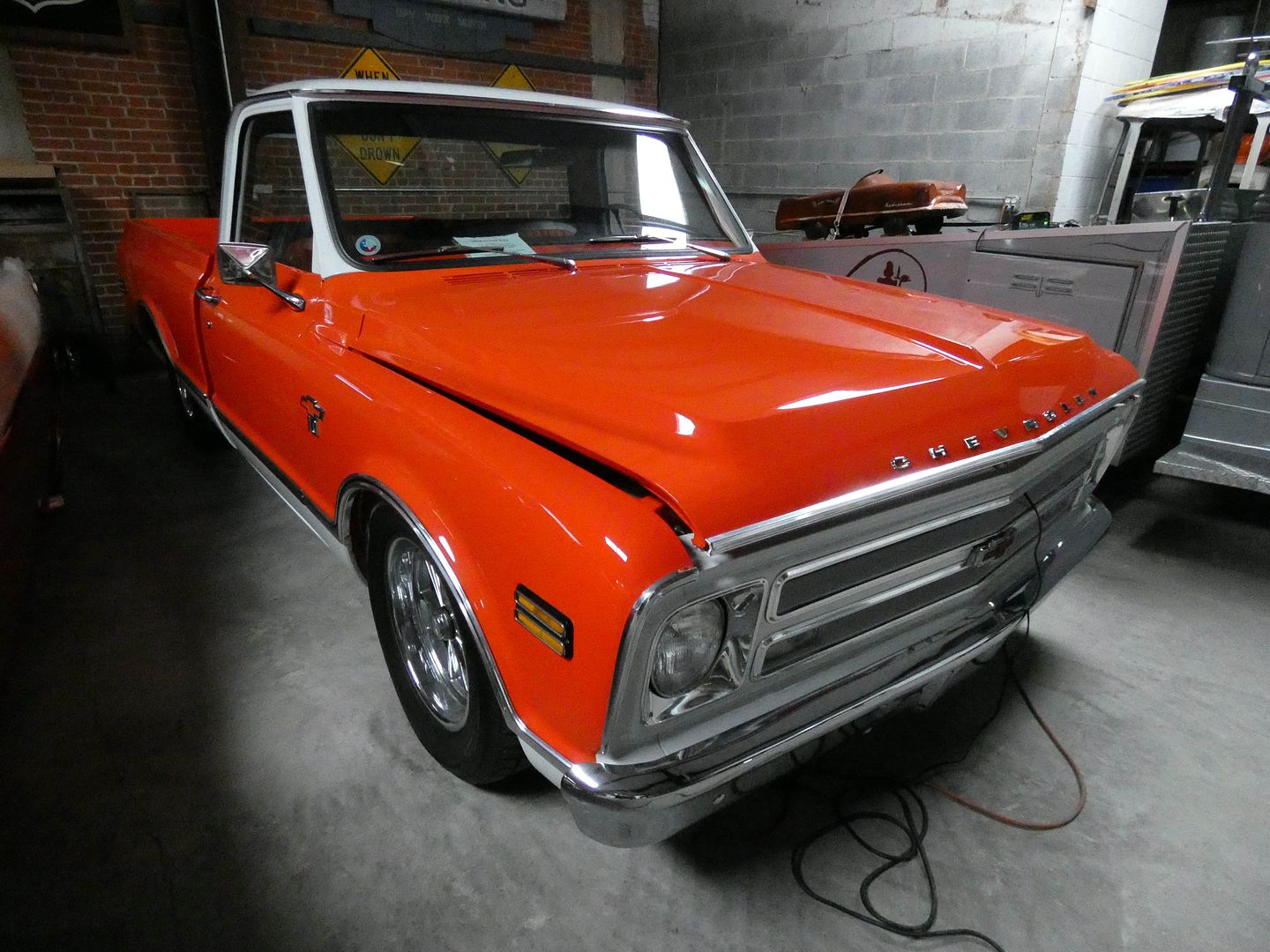

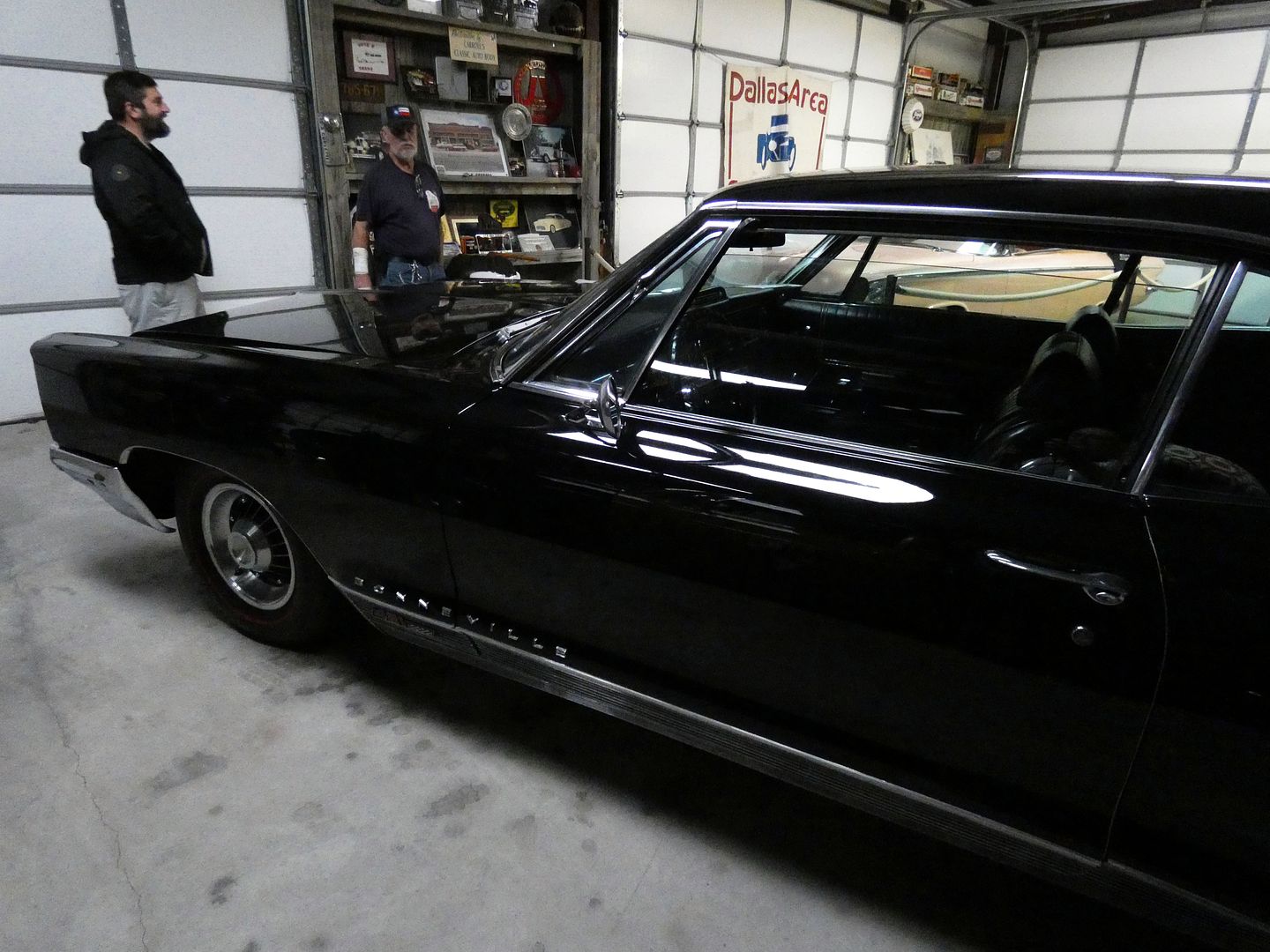
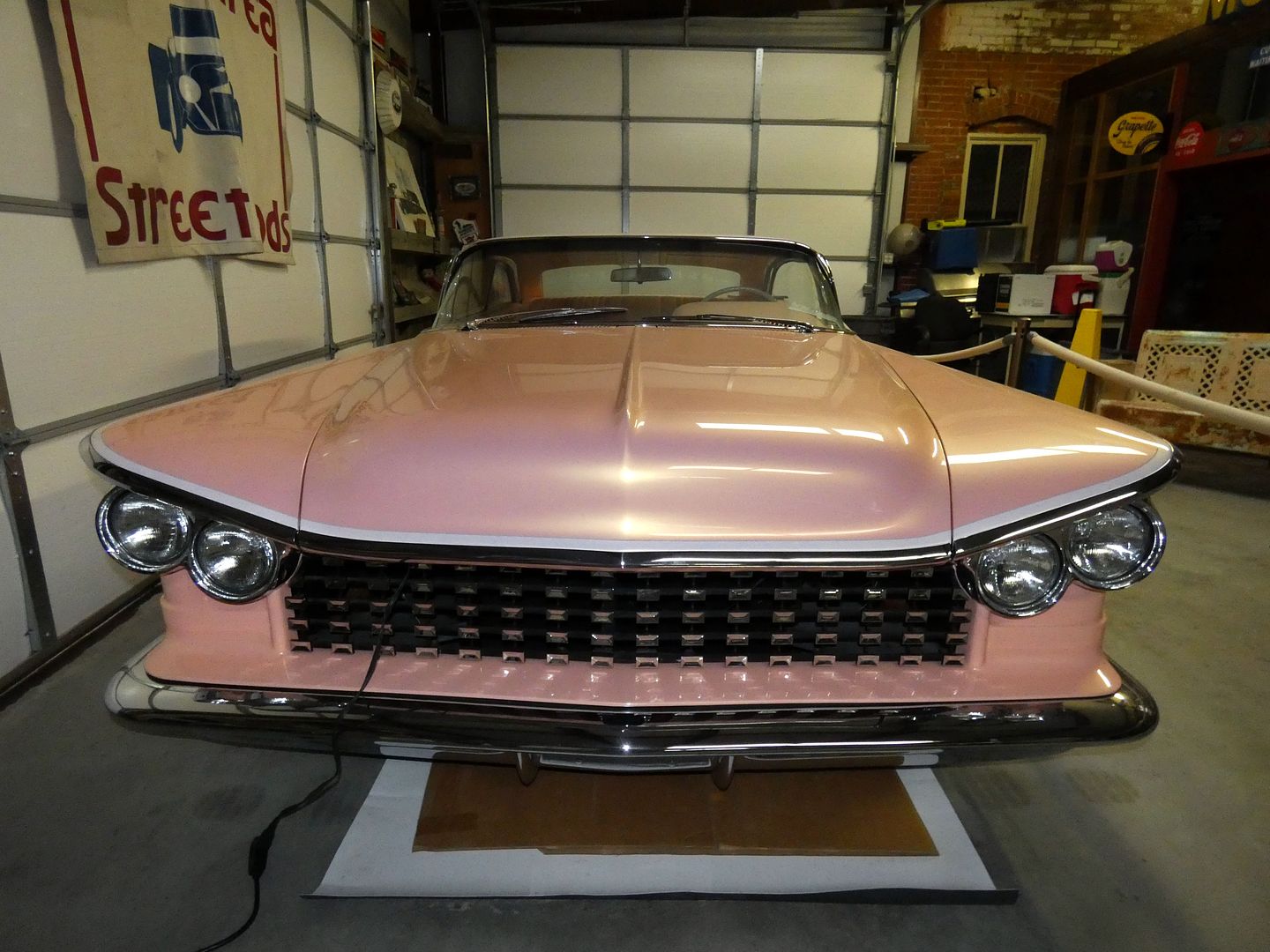


Estes custom built his 1955 Pontiac Starchief Wagon in 2003 with a Corvette engine...

...and fully customized his 1968 Chevy C-10 in 2017.

Amidst the police car...

...and Bonneville..

...I found my way to the lovely "Peaches and Cream" 1959 Buick Invicta with its gold pearl exterior and striking front grille...

...original motor, flared rocker panels, and Frenched tail lights.
What a beauty!
This is so much stuff that most people wouldn't care about as soon as the fad era fades, stuff that would otherwise end up in a landfill. Sure, it's all a sign of overt commercialism—but this is our society now.
And while commercial art of a bygone era may be an artifact of capitalism, it's still art. And it deserves to be enjoyed by generations to come.
Thank goodness for guys like Carroll Estes who care enough, and have enough time, to devote their lives to building their "ultimate man cave" with cast-offs like these. But what happens to them when he's gone?
Related Posts:

This is so cool. Hopefully he will be able to find someone to keep it. It's like a time capsule. Those cars have to be worth a lot. Fun fact. I worked at Bob's Big Boy as a hostess/cashier in the 70's in Las Vegas.
ReplyDeleteSo many of the items in the museum I remember as every day part of life in my youth and later. When I attended Burbank High from 1949 to 1952 Bobs and the big boy hamburger was a must-have period of life going to a drive-in or walk-in restaurant. That was long before placing Big Boy statues at the front entrance. They had the best coffee as I learned later but always had the best milk shakes, always served in in a silver metal goblet. At the Magnolia Park drive in, with a tray hanging out the left and right windows and speedy service by the car hops, the juke box was always belting out the latest popular songs. The neighbors started complaining about incessantly putting Irene to bed as the very popular song for awhile was "Irene good night, I'll see you in my dreams." Oil came in cans. Plastic bottles did not exist. Tooth paste and some medical ointments were in metal tubes made of tin. These were original tin cans. All radios operated with vacuum tubes, a technology I studied in college before transistors existed. Flat screen television was something I read about in science fiction stories. Read The Veldt by Ray Bradbury taking flat panel TV realism to the extreme.
ReplyDelete